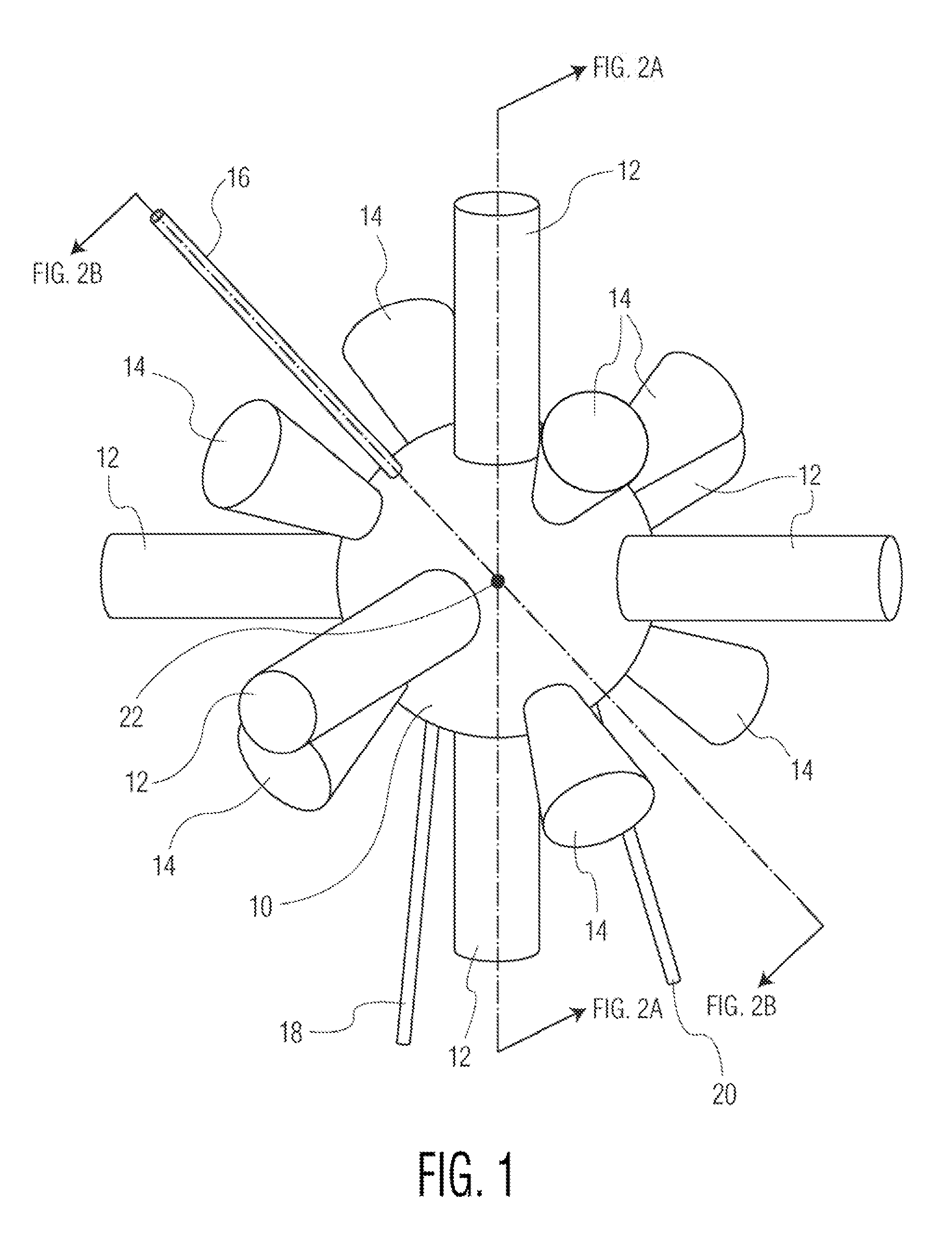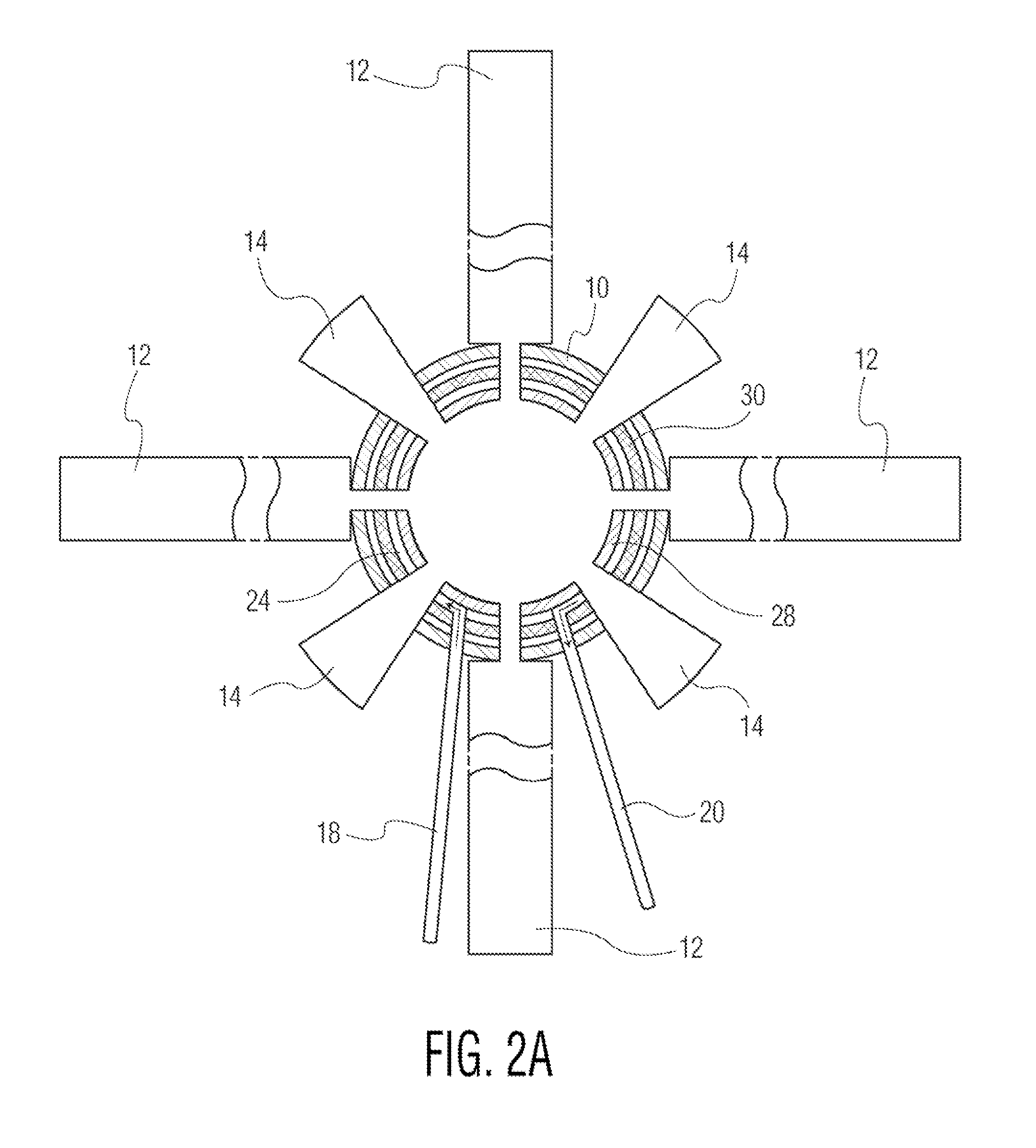Method and system for controlled fusion reactions
a fusion reaction and controlled technology, applied in nuclear reactors, nuclear engineering, greenhouse gas reduction, etc., can solve the problems of limited success in creating an efficient, self-sustaining fusion reaction, serious hydrodynamic instability, and limited prior approaches, so as to reduce the number of beams used to illuminate the target, reduce the cost and size of the reactor, and increase the reliability
- Summary
- Abstract
- Description
- Claims
- Application Information
AI Technical Summary
Benefits of technology
Problems solved by technology
Method used
Image
Examples
Embodiment Construction
[0038] A list of drawing reference numbers' their associated parts and preferred materials for the parts can be found near the end of this description of the preferred embodiments. Literature references are cited in full after the list of drawing reference numbers. In this description, short literature references for author “Nakai,” for instance, are given as follows: (Nakai Reference.)
Main Principles of Preferred Embodiments
[0039] Main principles of preferred embodiments of the invention are described in connection with FIGS. 1-3.
[0040]FIG. 1 shows a reactor for generation of energy by controlled nuclear fusion. The system includes of a central target chamber or region 10. A series six or more of Energy Drivers 12 are arranged in symmetrical pairs around the central target region. The symmetrical Energy Drivers 12 are arranged in symmetrical manner about a target pellet location 22, so as to collectively create a preferably highly spherical wavefront that impinges on target fusi...
PUM
 Login to View More
Login to View More Abstract
Description
Claims
Application Information
 Login to View More
Login to View More - R&D
- Intellectual Property
- Life Sciences
- Materials
- Tech Scout
- Unparalleled Data Quality
- Higher Quality Content
- 60% Fewer Hallucinations
Browse by: Latest US Patents, China's latest patents, Technical Efficacy Thesaurus, Application Domain, Technology Topic, Popular Technical Reports.
© 2025 PatSnap. All rights reserved.Legal|Privacy policy|Modern Slavery Act Transparency Statement|Sitemap|About US| Contact US: help@patsnap.com



